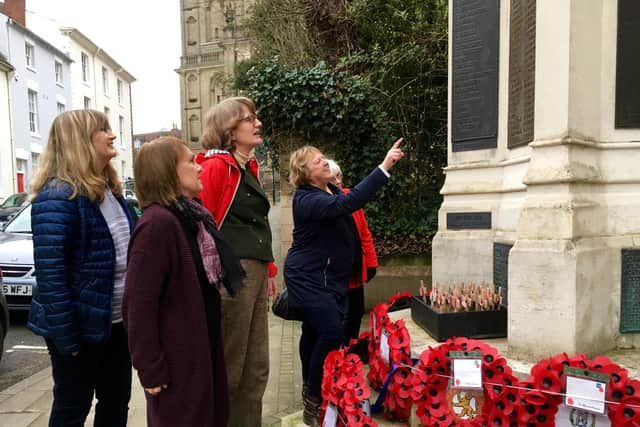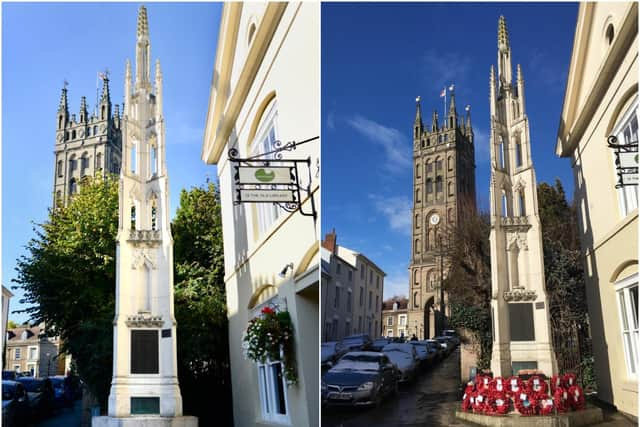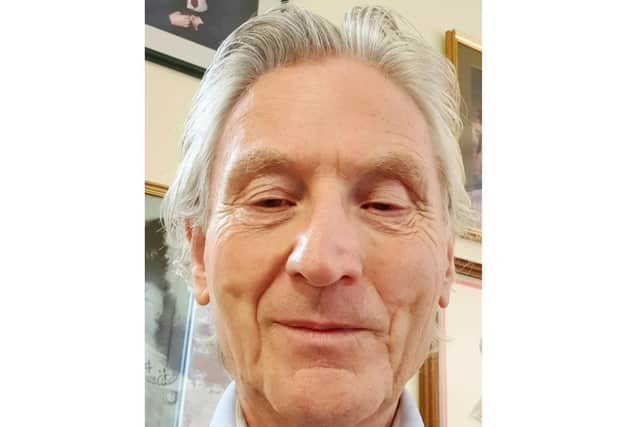The Coventry Blitz, POWs and VE Day - Kenilworth resident Greville Warwick recalls living in Warwick during WW2
and live on Freeview channel 276
The appropriately named Warwick family were well known in the Friar Street area where they lived for many years.
After reading the series about Warwick in WW2 in the Courier, Greville Warwick contacted the Unlocking Warwick volunteers who are finding the stories behind the names on the war memorial, and recording the memories of those citizens who can remember life in the town during the war.
Advertisement
Hide AdAdvertisement
Hide AdNow in his eighties, Greville still runs his own successful business providing corporate tax services to innovative companies. He has vivid memories of life in Warwick during WW2.


Greville spoke to Rick Thompson from Unlocking Warwick about his memories.
The Coventry Blitz
“My very first memory is of lying on a pile of coal in my mother's arms in our cellar in Friar Street with the house shaking and the awful sound of bombs exploding.
"My baby sister was next to us in her full-length infant's gas mask, like an incubator.


Advertisement
Hide AdAdvertisement
Hide Ad"My mother was clearly terrified. Finally my father came down the step ladder to say it was Coventry being bombed, not Warwick.
"This was November 14 , 1940, the night of the Coventry blitz. It went on all night and I can clearly remember watching the orange glow on the horizon.
"Then the refugees from Coventry started to arrive with carts containing whatever belongings they had been able to save.
"Mr Tony, from a well-know family in Woodhouse Street, went to Coventry repeatedly with his horse and cart to bring back bombed-out families. He was a real hero”.


Playing in the streets and the POWs
Advertisement
Hide AdAdvertisement
Hide Ad“The kids on the west side of Warwick spent a lot of time playing together in the streets.
"There were hardly any cars in those days, but plenty of horse-drawn carts, including the milk cart and the dustcart.
"We must have been skinny, scruffy devils. We made up our own games – playing street football or cricket with a tin can, and hopscotch. We also played 'five stones' with pebbles, tossing
them up and catching them on the back of your hand as you recited an old rhyme.
Advertisement
Hide AdAdvertisement
Hide Ad"We didn't see ourselves as deprived. My mother would go off to the shop with her ration book, and we also managed to get the occasional rabbit, quite a lot of fish, and we grew a few things.
"We didn't go hungry, but fruit was in very short supply, unless we could scrump a few apples.
"The house was a pre-Victorian terrace with an outside privy, a wash-house in the yard and gas lighting, but we were happy there. It is a great pity that so many of these solidly-built houses were demolished post-war.
"The children had lots of freedom. Living near the racecourse we would visit the prisoners of war who were held there.
Advertisement
Hide AdAdvertisement
Hide Ad"The Italians were housed in the grandstand and some of the Germans were in the old Tote building, also used as their cookhouse. We used to stand at the barbed wire and chat to the German POWs.
"They were mostly young lads and were happy to talk to the local kids. I learned quite a few German phrases and it encouraged me to go on and learn the German language later.
"The POWs used to be marched down our road on their way to working on the local farms. It was quite funny really. The Italians went out first and would sing arias from operas as they marched.
"Then the Germans followed with their military marching songs”.
The Buildings that were Demolished
Advertisement
Hide AdAdvertisement
Hide AdGreville Warwick holds strong views about the redevelopment of Warwick after the war. He calls it vandalism.
“In the post-war period I reckon the local councils did more damage to town centres than the Luftwaffe! Names abound of the Warwick characters who lived in our area.
"There was Jesus Liggins the baker; Punch Hickin the herdsman, who lived in the beautiful old Herdman’s cottage at the entrance to the racecourse - since demolished by 'vandals' who had better use for that small plot of land.
"Our old houses in Friar Street were demolished to make way for the new slums you see there now. Beautiful St Paul’s Church was full of Victorian Pews, a Pulpit, Vestry and Minstrels Gallery.
Advertisement
Hide AdAdvertisement
Hide Ad"It had its own bell that rang the services and events. There was a full choir of men and boys to fill its fine choir stalls. St Paul’s is little more than a shadow of what I remember”.
Crippled British Bombers flying into Warwick
“Between the Stratford Road and Hampton Road there was an airfield. It had a specialist repair and maintenance base.
"Bombers returning from missions over Germany would be directed to Warwick if they were damaged. On several occasions I remember Lancaster bombers limping in to make dangerous forced landing.
"We kids thought it was very exciting.
"The Budbrook Barracks of the Royal Warwickshire Regiment was not far away, and in the middle of town you could clearly hear the Drill Sergeants barking out orders or the crash of the Regimental Band playing stirring tunes.
Advertisement
Hide AdAdvertisement
Hide Ad"American troops could also be seen strolling around the town. They had a base in Emscote Road, next to the old cattle market there.
"I think it might have been an intelligence HQ. And of course Warwick was full of injured British soldiers recuperating. They wore distinctive blue uniforms."
The Dreaded Telegrams
"My grandmother lost two sons in WW2 – my uncles. They were the Jordan brothers, part of a family of thirteen children.
"I remember her weeping at the loss of one of her sons, which was very upsetting for a young boy. And I vividly remember a distressed woman neighbour rushing out into the street brandishing the dreaded telegram informing her that her son had died at Arnhem.
Advertisement
Hide AdAdvertisement
Hide Ad"We were too young to really understand the war. We hadn't known anything else. But we could see how it devastated some of our neighbours and it is emotional remembering it now.
"I had not thought about these events for many years, but when I saw the recent articles in the Warwick Courier the recollections came spilling back.
"Younger generations should know about the sacrifices made in those days."
VE Day
"I certainly remember Victory in Europe Day in 1945. There were street parties in Woodhouse Street and Compton Street and everyone was singing and dancing.
Advertisement
Hide AdAdvertisement
Hide Ad"The street party in Compton Street was outside Harry Ludlow’s butchers shop and the old lodging house opposite the Fourpenny Shop boozer run by one Alf Howlett.
"The loaded tables were full of kids, all of us shrieking with excitement as old Tommy Loveridge, who ran the lodging house, played the concertina with one arm.
"Tommy had lost his arm in the trenches in WW1, yet managed to play the concertina. We loved it."